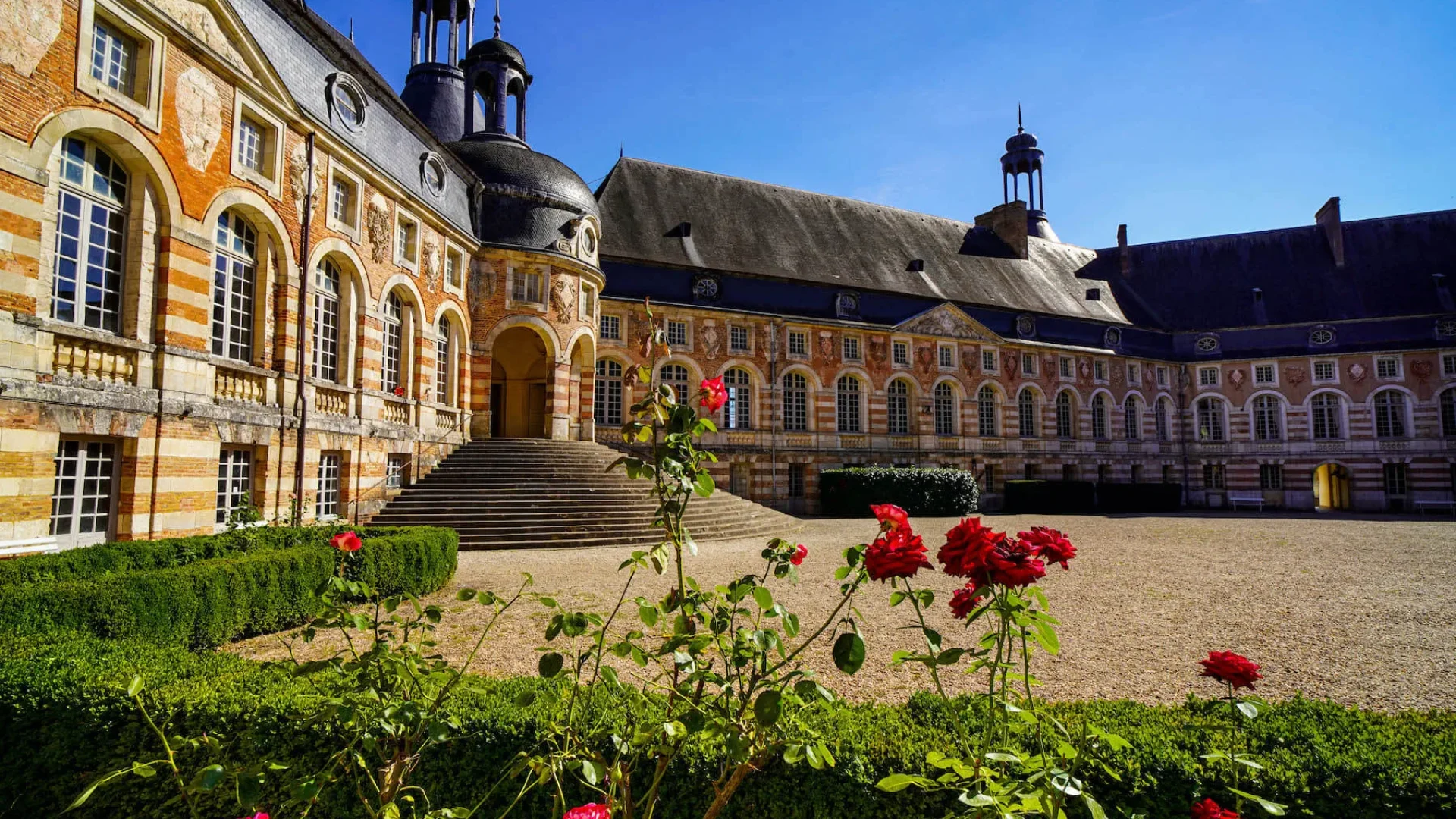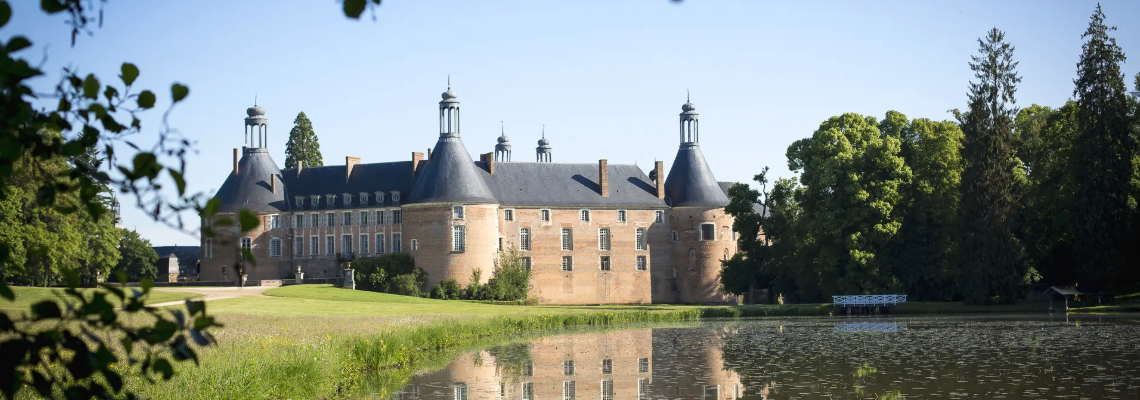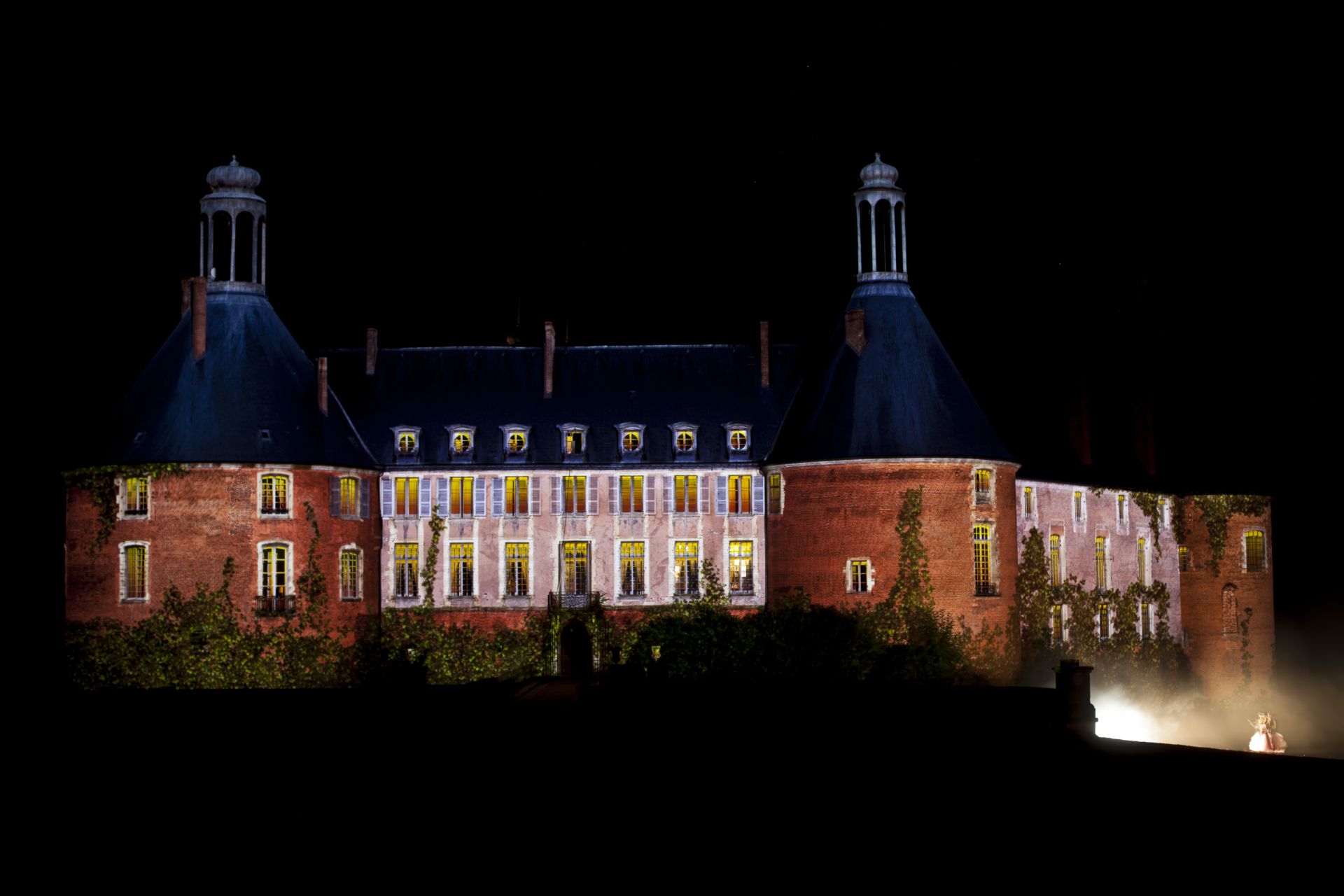

In 980, Héribert, Bishop of Auxerre and half-brother of Hugh Capet, built a fortified hunting lodge.
In 1453, Antoine de Chabannes rebuilt the current castle on the foundations of the ancient fortress, creating its unique pentagonal layout with six massive towers.

was sentenced to five years of exile after the Fronde events and settled in Saint-Fargeau. She commissioned architect Le Vau to redesign the castle’s inner façades, leaving a stunning example of French classicism.
In 1713, the Lepeletier family acquired the castle. Louis Michel Lepeletier, a famous revolutionary, voted for the execution of Louis XVI and was later assassinated.
Saint-Fargeau Castle also plays a central role in Jean d’Ormesson’s novel Au plaisir de Dieu.

Photo credits: Puisaye Forterre Tourist Office / Château de Saint-Fargeau